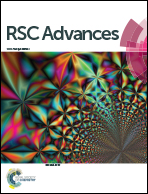Formulation and process optimizations of nano-cosmeceuticals containing purified swiftlet nest
Abstract
The good effects of swiftlet nest (SN) on the skin have been widely investigated. However, the importance of the SN in the area of nano-cosmeceutical research is still limited as it is commonly consumed, rather than being applied to the skin. Formulation and optimization processes are two important issues in the manufacturing of cosmetics. In this work, Response surface methodology (RSM) was utilized to investigate the influence of the nano-cosmeceuticals composition; purified SN (1–5% w/w), and Tween 80 (3–6% w/w) as well as the preparation method; time of homogenization (10–30 min), on the physicochemical properties of nano-cosmeceuticals. The response variables were particle size and zeta potential which were very important characteristics in nano-cosmeceuticals. Formulation and optimization of three independent variables were carried out to obtain an optimum nano-cosmeceuticals with the lowest particle size and high stability formulation. The optimized nano-emulsion containing purified SN with particle size of 136.35 nm and zeta potential of −40.2 mV was successfully formulated. This was obtained experimentally and was closer to the predicted values of 136.22 nm and −40.07 mV, respectively. The optimized formulation remained stable for three months after the centrifugation test as well as storage at different temperatures of 4 °C, 25 °C and 45 °C.


 Please wait while we load your content...
Please wait while we load your content...